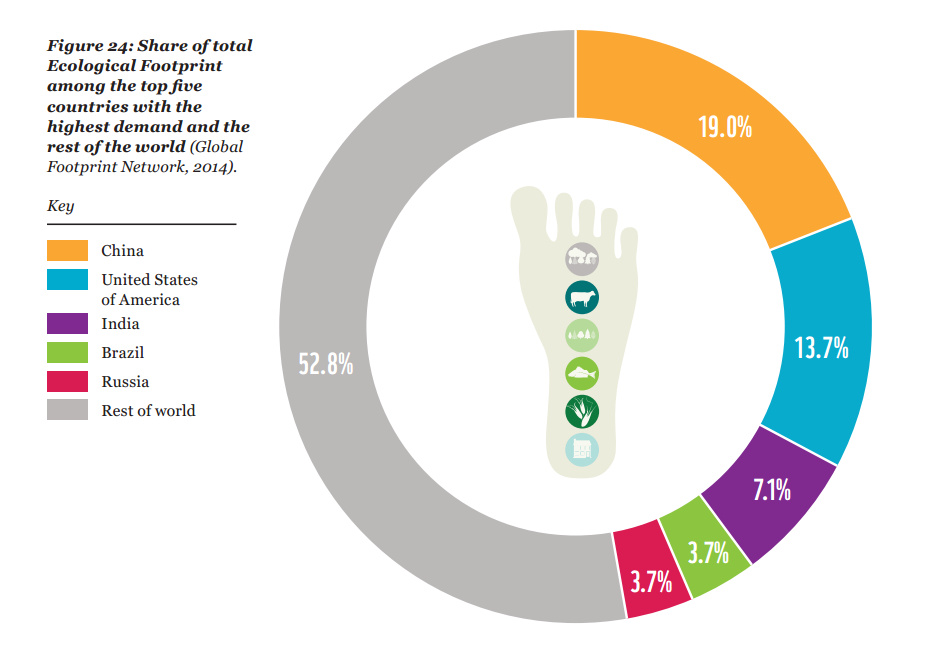We're missing half an Earth to sustain our lifestyles
 The Ecological Footprint, which is one of the main
indicators of sustainability used in the report, shows how many Earths would be
required to meet the demands humanity makes on nature each year. These demands
include the renewable resources consumed for food, fuel and fibre, the land
being built on, and the forests needed to absorb the carbon emissions.
The Ecological Footprint, which is one of the main
indicators of sustainability used in the report, shows how many Earths would be
required to meet the demands humanity makes on nature each year. These demands
include the renewable resources consumed for food, fuel and fibre, the land
being built on, and the forests needed to absorb the carbon emissions.
In 1970, one planet was exactly enough for the whole world population. In just 40 years, our demands have risen 50% - we now need 1.5 Earths to sustain our way of life, given the current world population. China has the largest impact, accounting for 19% of the world’s ecological footprint, followed by USA (14%), India (7%), Brazil (4%) and Russia (4%).
Countries with a high level of human development tend to have higher ecological footprints (five times higher than in low-income countries, in fact). The challenge is for countries to increase their human development while keeping their footprint down to globally sustainable levels. For example, Germany has managed to increase its human development index and income since the year 2000 while keeping its ecological footprint steady. The only questionable feat about this „increased sustainability“ is that if the whole world lived like Germany, we’d require two Earths. That’s still one too many.Because the carbon footprint constitutes close to half of the global ecological footprint, one way to lessen our footprint is to look for and consume low-carbon products.
 lines
lines